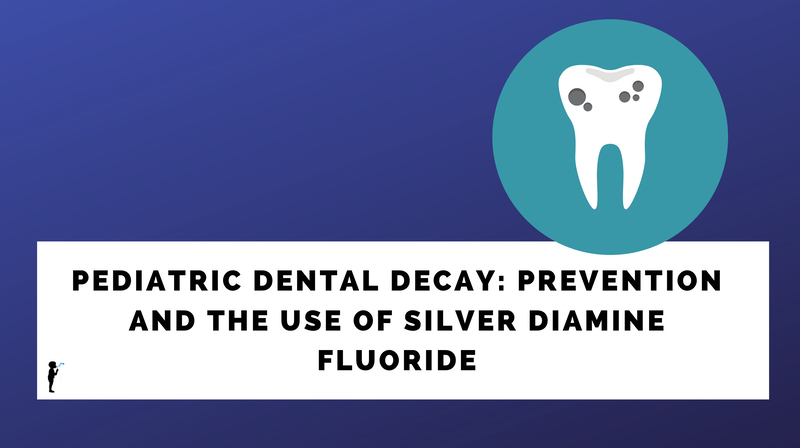
Pediatric Dental Decay: Prevention and the Use of Silver Diamine Fluoride
Editor’s note: Here at Naturopathic Pediatrics it is our goal to provide pediatric health information in an unbiased format. Our articles include well-researched information about both conventional and naturopathic medicine. At Naturopathic Pediatrics we feel strongly that parents are best informed when they have ALL options presented to them in an unbiased, guilt and fear-free format.
For some reason the use of fluoride is a subject that has garnered almost as much vitriol in social media as abortion, circumcisions and vaccinations. We urge all our readers to take a step back and read objectively. Fluoride is not religion. A big thank-you to Dr. Samantha Evans Rayack who spent hours reviewing and summarizing research for our readers.
Our toddler’s front teeth are stained black, and we chose this for him.
At first glance the teeth look rotten, but the truth is they are healthier now than they were a few weeks ago. His dental journey continues, and time will tell if the black stain is enough to save his top four deciduous teeth. We have concerns about this effecting his appearance and what having black teeth (or missing teeth) may do for his development (social, language, etc). Saying that, we feel the stain was a good choice for our son’s long-term dental health. Being parents who underwent a lot of dental “care” growing up, we hope to decrease our son’s potential trauma surrounding visits to the dentist, as well as delay or reduce the need for the traditional drill-and-fill method. May this article encourage stellar dental hygiene and preventative practices, as well as bring awareness to the up-and-coming treatment in the hopes of helping to normalize black teeth.
Primary care providers should be assessing the teeth of infants and children at each well child examination.
Providers need to be able to screen children who are high risk and make appropriate referrals. The American Academy of Pediatric Dentists recommends a pediatric dentist see children with the eruption of the fist tooth or by one year of age. The resource UpToDate1 is brilliantly helpful and suggests counseling and referring when children have any of the following risk factors:
- Mother/primary caregiver with active cavities
- Parent/caregiver with low socioeconomic status
- Breastfeeding or bottle-feeding beyond 12 months of age
- Frequent consumption of sugary beverages and snacks
- Prolonged use of a training cup (sippy cup) throughout the day
- Use of a bottle at bedtime, especially with sweetened beverages
- Use of liquid medication for longer than three weeks
- Exposure to passive tobacco smoke
- Children with special health care needs [I’d add abnormal maxillary frenulum to this list]2
- Insufficient fluoride exposure
- Visible plaque on upper front teeth
- Enamel pits or defects (including white lines or spots)
Tooth structure
All teeth are composed of 4 main parts: the enamel is the thin-but-strong protective outer coating; under the enamel is dentin, a living layer of tissue that comprises the majority of the tooth tissue and helps form the structure; the pulp is the innermost soft tissue of the tooth that houses the nerves and is responsible for making more dentin; and lastly there is the root, or roots, which secures the tooth into the bone. Once decay gets through the enamel, it can spread scary fast. At this point, regular fluoride varnish offered at the dentist is no longer sufficient to arrest the decay.
Silver Diamine Fluoride
Silver Diamine Fluoride (SDF) is a relatively new dental treatment in the United States, but has been popular in Japan for decades. The FDA approved SDF in 2015 as a treatment for tooth sensitivity, but it is being used off-label for treating dental caries. Multiple studies show its safety and efficacy in halting decay in its tracks and helping to remineralize teeth.3 Use of SDF varies from state to state and dentist to dentist, but in Oregon where I live, its popularity is on the rise. Most dentists prefer to wait until at least 20 months of age to do more invasive procedures or to use general anesthesia. This is where we stand in our son’s case, hoping the SDF will hinder the progression of dental disease. So far it is has been a success.
The application of SDF is quick and easy, without any need for anesthesia, needles, laughing gas or other invasive procedures. The teeth are first dried with gauze. Next is the application of a single drop of the clear medication with a tiny brush, directly on the areas of decay. It bonds to the teeth very rapidly. SDF does not taste lovely, so some dentists may try to follow with an application of a traditional fluoride varnish (mostly for the flavor) or offer the child a sip of water or the option to breast feed if applicable. The teeth are assessed again in two weeks, and a second application is offered at that time. Further treatments will vary depending on the dentist and the child’s individual response. The American Academy of Pediatric Dentistry (AAPD) has set evidence-based recommendations for the application of 38% SDF.4,5
The chemical formula of Silver Diamine Fluoride is Ag(NH3)2F. According to the AAPD, “The exact mechanism of SDF is not understood. It is theorized that fluoride ions act mainly on the tooth structure, while silver ions, like other heavy metals, are antimicrobial. It also is theorized that SDF reacts with hydroxyapatite in an alkaline environment to form calcium fluoride (CaF2) and silver phosphate as major reaction products. CaF2 provides sufficient fluoride to form fluorapatite which is less soluble than hydroxyapatite in an acidic environment.”4 The ammonia in the solution is thought to help stabilize the high concentrations of silver and fluoride.
SDF toxicity
The high concentrations of ions involved chime my toxicity alarm, but SDF has a high LD50 value, indicative of low toxicity. Japan has been using SDF for many decades, and no toxic adverse events have been reported.3 When used as recommended, a single drop can treat up to 5 teeth; this also helps make SDF a very low cost treatment. The main drawback of Silver Diamine Fluoride is the black stain on the teeth where there are areas of decay. The stain is permanent on the tooth and cannot be brushed off or bleached. SDF will temporarily stain oral mucosa and skin, so extreme care should be taken with application.
Cautions and Contraindications
Sometimes SDF can irritate the oral mucosa and cause white, painful lesions3. SDF is contraindicated in people with silver allergy, stomatitis or any type of chronic mouth sores. My son had some white mucosal irritation almost instantly, it did not appear to be painful, and it self resolved in less than a day. With the second application of SDF, our pediatric dentist slopped some onto the skin of his oral commissure, with a resulting black stain “moustache” that lasted over 4 weeks. The Practical Implications section of a 2017 study sums up what I would say quite nicely, “Clinicians need to understand parental sensitivities regarding the staining effect of SDF to plan adequately for the use of SDF as a method of caries management in pediatric patients.”6
My take on SDF, and our story
I am a naturopathic doctor whose practice focuses on pediatric medicine, yet my child has significant decay. I view our son’s situation as the “perfect storm” where many factors aligned in his disfavor. From the eruption of his first tooth we brushed or wiped it regularly. Looking back, I wish we had been more diligent with twice daily cleanings. Do not be afraid to brush their teeth well, even if they dislike it—it is THAT important. A trick I have found for good control of the toothbrush and minimal resistance from my child is to have him sit on my lap facing me with his legs straddled around my waist, then lay him back over my legs. I can use one hand to open his mouth and the other to brush thoroughly, or with the help of another person it goes even smoother. This position allows for easier brushing of the grooved, posterior aspects of the teeth, where bacteria love to hide. Young children learn through observation, so it important for parents to practice good oral hygiene and brush (and floss!) in front of their children to model and normalize the act. Some parents find it helpful to sing a silly song or play an Elmo tooth brushing video.
Pros and cons of fluoride
Topical fluoride has been shown to build healthy teeth. We live in a town with fluoridated water, and although we do use a water filter, it does not remove the fluoride. There are pros and cons to municipal water fluoridation, I am just saying in our case, our son had fluoride exposure in utero and out. The AAPD encourages kids under 3 to use a thin smear of fluoride toothpaste on a soft bristle brush with the eruption of the first tooth; kids over age 3 can use a little more toothpaste but it should be discouraged from being swallowed. We alternate between smears of toothpastes with fluoride and/or xylitol. Xylitol does have some encouraging research, but it has to be applied frequently throughout the day for best results.7, 8
Other factors in building healthy enamel
Certain vitamin and mineral deficiencies in the child are associated with dental decay, including vitamin D9, 10 and iron.11 Despite supplementation and a decent diet, my lab values for vitamin D, 25-Hydroxy were low at the start of pregnancy (and haven’t been checked since). I also had borderline low hematocrit and hemoglobin throughout pregnancy and the immediate postpartum period. I premise that these factors may have contributed in-utero. My son had healthy, normal hemoglobin levels at 9 and 12 months of age. Both phosphorus and calcium are involved in healthy tooth development and remineralization, and should be in adequate sources in the diet.12 The teeth are always trying to find a dynamic balance between demineralization and remineralization.13 Vitamin K2 also plays a role and has been found to improve “salivary buffering through its influence on calcium and inorganic phosphates secreted.”14 Primary care providers should also consider various endocrine disorders, especially relating to the thyroid, when dental decay has no other known cause.15
Lab work for dental decay, including celiac testing
At 15 months of age, partly because of the research I found, my son’s PCP wrote a lab requisition for a CBC, vitamin D 25-OH, ferritin, lead level and a Celiac disease panel. Studies show some link between Celiac disease and enamel defects.16, 17 Fellow naturopathic doctors have found that even with negative Celiac tests, their patients’ decay does better with a gluten free diet. One “study indicates that even low blood lead levels are associated with increased dental caries extent/severity in early life”.18 My son’s 15 month labs show normal hemoglobin of 11.6 and hematocrit of 39%, low normal ferritin of 17.2, vitamin D 25-OH of 72.4, negative lead and normal Celiac panel.
Streptococcus mutans and dental caries
There is a strong probability that our son got the caries-causing, pathogenic Strep mutans bacteria from us, most likely from me as the primary care giver.19 Bacteriotherapy, using specific probiotic strains to decrease the load of pathogenic bacteria and promote oral health, has nice evidence in helping dental decay.20 Xylitol is also helpful for combating Strep mutans and helping to break up biofilm, and is supported as a treatment by the AAPD.4, 5 To limit your child’s exposure to these bacteria, parents (especially those with active caries) should avoid sharing toothbrushes, food, drinks/straws/cups, and eating utensils. It is not a good idea to “clean” a pacifier in your mouth if it has fallen on the floor before giving it back to your child.21
Diet and dental caries
Of course diet plays a role in pediatric dental decay. My son eats a diet with no sugar or high fructose corn syrup, consisting mostly of organic and local foods. He is an avid breast feeder, and as much as I hate to admit it, I think extended night nursing played a role in his situation. The studies on breast-feeding and pediatric dental decay are somewhat inconclusive, with a study showing breast milk has anti-cariogenic properties22, while other studies show long-duration breast-feeding is associated with decay.23 Saliva production is naturally lower at night, so sugars from the breast milk can sit on the teeth for longer than they might during the day. Our pediatric dentist recommended we wipe his teeth with a moist washcloth after each feed in the night. Honestly, I have not done this, mostly because of the inconvenience and for fear of waking a sleeping baby. Humans have been exclusively breast-feeding for millennia, and most do not end up with significant decay like my son’s. Breast-feeding has so many wonderful benefits for mom and baby, so I cannot in good conscience place all the blame on extended nursing, and I DO NOT want moms to feel guilty for breast-feeding if their kid has some dental decay.
Other dietary factors that may contribute to dental decay include eating foods that stick to the teeth, like dried fruit and gummy vitamins. A friend’s dentist likened dried fruit to napalm on the teeth. Certain acids in high concentration in the diet may contribute to decay. I had a hard time finding studies specifically looking at phytic acid and dental decay, but The Weston A. Price Foundation has a good write-up of this “anti-nutrient” from legumes and grains and how it can block the absorption of other vital nutrients24. Vitamin C also plays an important role in healthy teeth and gingivae25, but excessive (topical) ascorbic acid may contribute to thinning of the enamel. I have been known to give my kid a sporadic chewable vitamin C and sips of kombucha (which has natural acids), but I do not think these are significant factors in our case.
Other naturopathic treatments for dental decay
Ozone therapy is being used successfully for dental decay, though not necessarily in the pediatric population.26, 27 There are many other potentially helpful treatments for dental decay, most of which do not have great research. Naturopathic physicians may recommend an alkalinizing diet, a homeopathic remedy or cell salts (Calc Fluor, Calc Phos and/or Silica), as well as mineralizing toothpastes with bioavailable calcium (such as MI Paste). There are tons of products on the market promoting help with dental decay, including probiotic/prebiotic toothpastes (Revitin), herbal swishes, essential oil blends, silver hydrosols, and more. Some of these products will help, but as always, use your best judgment. And of course there are a plethora of electric toothbrushes and water picks that may be helpful. The book, “Cure Tooth Decay: Remineralize Cavities and Repair Your Teeth Naturally With Good Food” by Ramiel Nagel, has ideas on the lack of fat-soluble vitamins in our Western diet leading to tooth decay.28
The role of genetics
A potential contributing factor we have very little control over is genetics. Our kid likely started at a disadvantage due to his parental decay history, how much of that is due to genetics versus Strep mutans colonization, or everything else, we may never know. There are some good studies demonstrating genetic risk factors, as well as studies showing a difference between the sexes, “with females usually exhibiting higher prevalence and severity of disease across all ages”. 29, 30
Other practitioner tools
Practitioners should be aware that The American Academy of Pediatrics website has incredibly helpful Oral Health Practice Tools that we can print and share with patients.31 The New York Times has a nice article with an accompanying video that is an easy to understand summary of SDF for the general public.32
So where do we go from here and how can we prevent bad decay in our next child?
We will continue to be diligent with at least twice daily brushings using a smear of toothpaste with fluoride and/or xylitol, and have regular visits to the pediatric dentist. Of course sugar and corn syrup will stay out of his otherwise healthy diet, and we will continue to make sure he is getting lots of fat-soluble vitamins and chewable probiotics with xylitol. We will try to avoid all-day snacking, ideally allowing 2-3 hours between meals, so saliva can help neutralize acids produced by bacteria. We will also encourage water drinking and rinsing after meals if brushing is not an option. When he is old enough, we will introduce oil pulling (too tricky for infants). Before I become pregnant again and whilst pregnant, I will do my best to ensure the best nutrition, including a quality prenatal vitamin, iron and vitamin D supplementation. I do still plan to breast feed, even at night, but may try to be better with wiping teeth off with a wet rag between feeds. We will be vigilant with watching the teeth for any signs of decay (often a white line is the first sign), and will take our next kid to the pediatric dentist with the eruption of the first tooth. We will be even better about minimizing exposure to our saliva (no spoon sharing or biting small pieces), and we will chew xylitol-containing gum daily. We plan to introduce iron rich foods and meat as soon as solids are started, and baby’s iron level will be checked at 9 months.
At some point kids will start to question why our boy has black teeth. We are hoping to turn this into a lesson on positive awareness and diversity, and how it is ok to observe the differences (and similarities) in people. We will explain what they are seeing and why, and how this special treatment is helping him. We are doing are best to raise him to feel secure and confident enough so that when he has the language to do so, he will be able to explain for himself why his teeth are black. We will always have concerns for our child, but we work to release the feelings of guilt and worry surrounding his teeth, as they are futile emotions and not helpful for the future.
References:
- Nowak AJ, Warren JJ. Preventive dental care and counseling for infants and young children. Griffen A, ed. UpToDate. Waltham, MA: UpToDate Inc. www.uptodate.com Accessed March 3, 2019.
- Kotlow LA. The influence of the maxillary frenum on the development and pattern of dental caries on anterior teth in breastfeeding infants: prevention, diagnosis and treatment. J Hum Lact. 2010 Aug;26(3):304-8. doi: 10.1177/0890334410362520. Epub 2010 Mar 22.
- Horst JA, Ellenikiotis H, Milgrom PL. UCSF Protocol for Caries Arrest Using Silver Diamine Fluoride: Rationale, Indications and Consent. J Calif Dent Assoc. 2016 Jan;44(1):16-28. https://www.ncbi.nlm.nih.gov/pmc/articles/PMC4778976/
- American Academy of Pediatric Dentistry. Policy on the use of Silver Diamine Fluoride for Pediatric Dental Patients, 2018. Reference Manual v40/no6 18/19.
- Crystal YO, Marghalani AA, Ureles SD, et al. Use of silver diamine fluoride for dental caries management in children and adolescents, including those with special health care needs. Pediatr Dent. 2017 Sep 15;39(5):135-145.
- Crystal YO, Janal MN, Hamilton DS, Niederman R. Parental perceptions and acceptance of silver diamine fluoride staining. J Am Dent Assoc. 2017 Jul;148(7):510-518.e4. doi: 10.1016/j.adaj.2017.03.013. Epub 2017 Apr 27.
- Milgrom P, Ly KA, Tut OK, et al. Xylitol pediatric topical oral syrup to prevent dental caries: a double-blind randomized clinical trial of efficacy. Arch Pediatr Adolesc Med. 2009;163(7):601-7.
- Marghalani AA, Guinto E, Phan M, Dhar V, Tinanoff N. Effectiveness of xylitol in reducing dental caries in children. Pediatr Dent. 2017 March 15;39(2):103-110.
- T Brown, S Creed, S Alexander, K Barnard, N Bridges, M Hancock. Vitamin D deficiency in children with dental caries—a prevalence study. Archives of Disease in Childhood. 2012;97:A103.
- Gyll J, Ridell K, Öhlund I, Karlsland Åkeson P, Johansson I, Lif Holgerson P. Vitamin D status and dental caries in healthy Swedish children. Nutr J. 2018;17(1):11. Published 2018 Jan 16. doi:10.1186/s12937-018-0318-1
- Schroth RJ, Levi J, Kliewer E, Friel J, Moffatt ME. Association between iron status, iron deficiency anaemia, and severe early childhood caries: a case-control study. BMC Pediatr. 2013;13:22. Published 2013 Feb 7. doi:10.1186/1471-2431-13-22
- Schemehorn BR, Orban JC, Wood GD, Fischer GM, Winston AE. Remineralization by fluoride enhanced with calcium and phosphate ingredients. J Clin Dent. 1999;10(1 Spec No):13-6.
- Abou Neel EA, Aljabo A, Strange A, et al. Demineralization-remineralization dynamics in teeth and bone. Int J Nanomedicine. 2016;11:4743-4763. Published 2016 Sep 19. doi:10.2147/IJN.S107624
- Southward K. A hypothetical role for vitamin K2 in the endocrine and exocrine aspects of dental caries. Med Hypotheses. 2015 Mar;84(3):276-80. doi: 10.1016/j.mehy.2015.01.011. Epub 2015 Jan 19.
- Chandna S, Bathla M. Oral manifestations of thyroid disorders and its management. Indian J Endocrinol Metab. 2011;15(Suppl 2):S113-6.
- Nieri M, Tofani E, Defraia E, Giuntini V, Franchi L. Enamel Defects and Aphthous Stomatitis in Celiac and Healthy Subjects: Systematic Review and Meta-analysis of Controlled Studies. J Dent. 2017 Oct;65:1-10. doi: 10.1016/j.jdent.2017.07.001. Epub 2017 Jul 5.
17. Bıçak DA, Urgancı N, Akyüz S, et al. Clinical evaluation of dental enamel defects and oral findings in coeliac children. Eur Oral Res. 2018 Sep;52(3):150-156. doi: 10.26650/eor.2018.525. Epub 2018 Sep 1.
- Wiener RC, Long DL, Jurevic RJ. Blood levels of the heavy metal, lead, and caries in children aged 24-72 months: NHANES III. Caries Res. 2014;49(1):26-33.
19. Berkowitz RJ. Mutans streptococci: acquisition and transmission. Pediatr Dent. 2006 Mar-Apr;28(2):106-9; discussion 192-8.
20. Seminario-Amez M, López-López J, Estrugo-Devesa A, Ayuso-Montero R, Jané-Salas E. Probiotics and oral health: A systematic review. Med Oral Patol Oral Cir Bucal. 2017 May 1;22(3):e282-e288.
21. Colak H, Dülgergil CT, Dalli M, Hamidi MM. Early childhood caries update: A review of causes, diagnoses, and treatments. J Nat Sci Biol Med. 2013;4(1):29-38.
- Erickson PR, Mazhari E. Investigation of the role of human breast milk in caries development. Pediatr Dent. 1999 Mar-Apr;21(2):86-90.
- Chaffee BW, Feldens CA, Vitolo MR. Association of long-duration and dental caries estimated with marginal structural models. Ann Epidemiol. 2014 Jun;24(6):448-54. Doi: 10.1016/j.annepidem.2014.01.013. Epub 2014 Feb 17.
- Nagel R. Living with phytic acid. The Weston A. Price Foundation. March 26, 2010.
- Rubinoff AB, Latner PA, Pasut LA. Vitamin C and oral health. J Can Dent Assoc. 1989 Sep;55(9):705-7.
- Domb WC. Ozone therapy in dentistry. A brief review for physicians. Interv Neuroradiol. 2014;20(5):632-6.
- Saini R. Ozone therapy in dentistry: A strategic review. J Nat Sci Biol Med. 2011;2(2):151-3.
- Nagel R. Cure Tooth Decay: Remineralize Cavities and Repair Your teeth naturally with good food. 2nd edition. Ashland, Oregon: Golden Child Publishing; 2010.
- Opal S, Garg S, Jain J, Walia I. Genetic factors affecting dental caries risk. Aust Dent J. 2015 Mar;60(1):2-11. doi: 10.1111/adj.12262.
- Shaffer JR, Wang X, McNeil DW, Weyant RJ, Crout R, Marazita ML. Genetic susceptibility to dental caries differs between the sexes: a family-based study. Caries Res. 2015;49(2):133-40.
- American Academy of Pediatrics: Oral Health Practice Tools.
- Saint Louis C. The New York Times. July 11, 2016. https://www.nytimes.com/2016/07/12/health/silver-diamine-fluoride-dentist-cavities.html
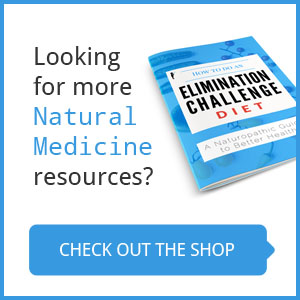
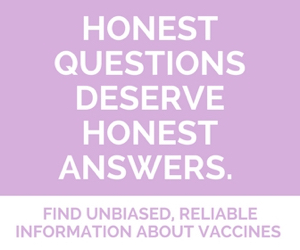
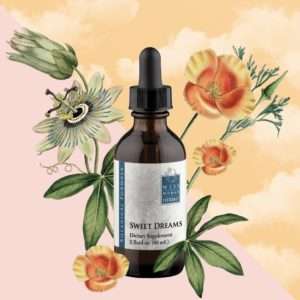
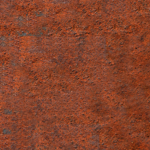
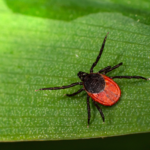
Mimi
December 13, 2022 at 4:21 amHow are his teeth now? My little one is 2 and drill and fill is not really an option at the moment due to not being able to sit very still.
Also the ferritin your child has was extremely low for adults and children ferritin should not be lower than 100ugl
B12 ideally above 100, vit d around 150 nmol and hb ideally above 12.5
Folate around 20
Danny
May 21, 2019 at 5:51 pmI am surprised fluoride is even advised considering it is a registered neurotoxin and Lugol’s iodine is a much better option for bad mouth bacteria.
pollyottisPeggy Hinkle
May 12, 2019 at 8:43 pmOne potential cause you did not mention are tongue ties and lip ties. When the tongue is “tied” down with a short frenulum, it is unable to sweep all the surfaces of all the teeth, often leading to decay. A tight frenulum under the upper lip can make it difficult to brush the upper teeth and to remove food that may have gotten pocketed under the lip on either side of the frenulum.
Erika Krumbeck, ND
May 13, 2019 at 8:16 pmAbsolutely yes. I have seen this in practice several times.